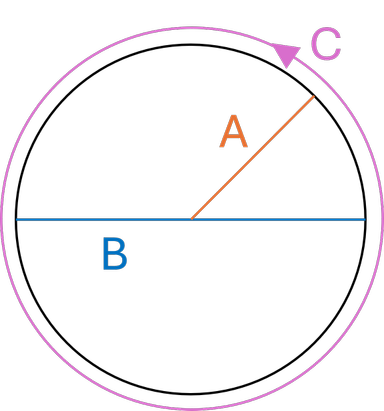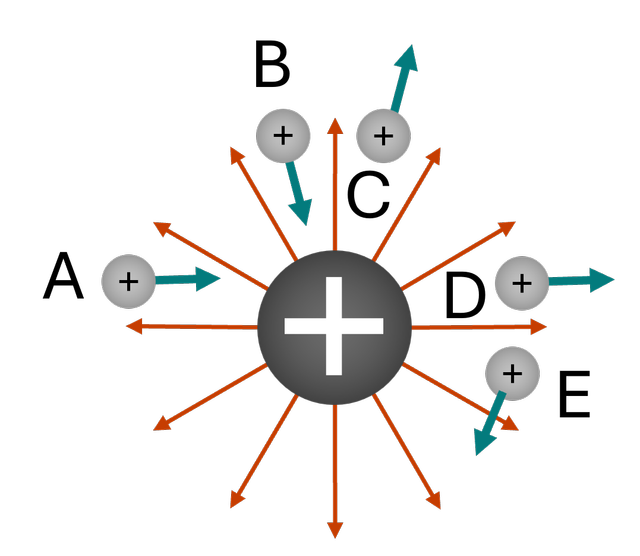Myths about teaching can hold you back
- Year 10
- AQA
- Higher
- Year 10
- AQA
- Higher
Electric fields
I can describe the properties of electric fields.
These resources were made for remote use during the pandemic, not classroom teaching.
Switch to our new teaching resources now - designed by teachers and leading subject experts, and tested in classrooms.
Lesson details
Key learning points
- Two unlike electric charges attract each other.
- Two like electric charges repel each other.
- There is an electric field radiating out from an electric charge.
- Electric field lines show the direction of force on a positive electric charge.
- The closer electric field lines are to each other, the stronger the electric field.
Keywords
Positive electric charge - The type of charge produced when electrons are removed.
Negative electric charge - The type of charge produced when electrons are gained.
Electrostatic force - The type of force due to electrically charged objects.
Van de Graaff - A device that produces electric charge and is used in electrostatic experiments.
Electric field - The invisible field around a charged object that causes another charged object to experience a force.
Common misconception
Pupils think that electric field lines show the movement of moving charges, rather than the force acting on them.
Add force arrows to electric field diagrams to show the size of the force they represent at different points.
To help you plan your year 10 physics lesson on: Electric fields, download all teaching resources for free and adapt to suit your pupils' needs...
To help you plan your year 10 physics lesson on: Electric fields, download all teaching resources for free and adapt to suit your pupils' needs.
The starter quiz will activate and check your pupils' prior knowledge, with versions available both with and without answers in PDF format.
We use learning cycles to break down learning into key concepts or ideas linked to the learning outcome. Each learning cycle features explanations with checks for understanding and practice tasks with feedback. All of this is found in our slide decks, ready for you to download and edit. The practice tasks are also available as printable worksheets and some lessons have additional materials with extra material you might need for teaching the lesson.
The assessment exit quiz will test your pupils' understanding of the key learning points.
Our video is a tool for planning, showing how other teachers might teach the lesson, offering helpful tips, modelled explanations and inspiration for your own delivery in the classroom. Plus, you can set it as homework or revision for pupils and keep their learning on track by sharing an online pupil version of this lesson.
Explore more key stage 4 physics lessons from the Electric fields and circuit calculations unit, dive into the full secondary physics curriculum, or learn more about lesson planning.

Equipment
For demonstration: Van de Graaff generator, polystyrene balls, empty pie tins, polythene rods, watch glass, duster and balloons.
Content guidance
- Risk assessment required - equipment
Supervision
Adult supervision required
Licence
Prior knowledge starter quiz
6 Questions
Q1.Which of the following are types of electric charge?
Q2.When two objects at a distance experience forces that pull them towards each other, we say they attract. When two objects at a distance experience forces that push them apart, we say they .
Q3.In the diagram, which of the labelled distances is the radius of the black circle?

Q4.A material that does not allow current to flow through it is called an electrical insulator. A material that allows current to flow through it is called an electrical .
Q5.When one object rubs against another, the two objects exert forces on each other. What is the name of this type of force?
Q6.There is a magnetic field around a magnet. Which of the following statements about magnetic fields are correct?
Assessment exit quiz
6 Questions
Q1.The force between charged objects is called the force.
Q2.A balloon is rubbed against a wall. After this, it sticks to the wall. Which of the following statements explain why the balloon sticks to the wall?
Q3.The arrows on electric field lines point in the direction of the force on...
Q4.Which of the following shows where the field is strongest in an electric field diagram?
Q5.The diagram shows five small positive charges in the electric field of a large positive charge. Which small charge has an arrow that correctly shows the direction of the force from the large charge?



